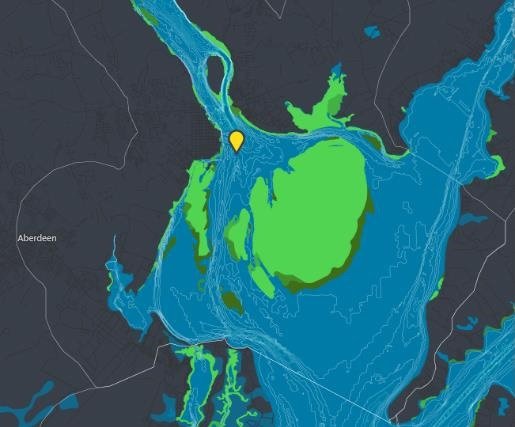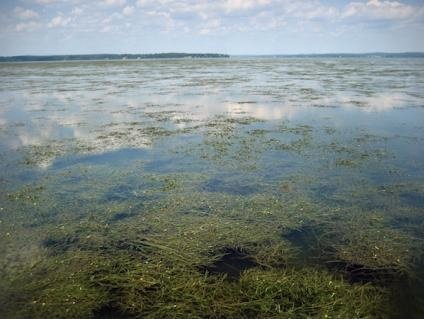Underwater Grass Comeback Helps Chesapeake Bay
Stories of Progress in Achieving Healthy Waters
U.S. EPA Region 3 Water Protection Division
Susquehanna Flats• January 21, 2016
The fortified Susquehanna Flats, the largest bed of underwater grasses in the Chesapeake Bay and a popular fishing spot, seems able to withstand a major weather punch. Its resilience is contributing to an overall increase in the Bay’s submerged aquatic vegetation (SAV), a key indicator of ecosystem health.
The latest figures available show that between 2013 and 2014, underwater grass abundance in the Chesapeake Bay rose 27 percent to 75,835 acres, an achievement of 41 percent of the Chesapeake Bay Program’s 185,000-acre goal.
In the Susquehanna Flats, spanning some 10 square miles near the mouth of the Susquehanna River, research indicates that the grasses continue to recover from Hurricane Irene and Tropical Storm Lee in 2011 and are proving resilient to stresses. The ability to survive those twin blows has been linked to a “subtle trend’ in reduced nitrogen pollution, a series of dry years of limited flow, and a process known as a “positive feedback loop,” where the bed’s ability to clear the water and absorb light perpetuates its own growth.
“Once the bed got established because of reductions in nutrient loadings and those dry years, it was able to help itself grow even more,” said Cassie Gurbisz of the University of Maryland Center for Environmental Science’s Horn Point Laboratory. “It’s kind of cool.”
Underwater grasses are important because they offer food to small invertebrates and migratory waterfowl; shelter young fish and blue crabs; and keep the water clear and healthy by absorbing excess nutrients, trapping suspended sediment and slowing shoreline erosion.
Unlike in 1972 when the Susquehanna Flats, already stressed by nutrient pollution from a fast-developing watershed, was practically wiped out by Tropical Storm Agnes and didn’t recover for nearly three decades, the Flats maintained a sizeable portion of its bed after the major floods of 2011.
Gurbisz, the lead author of a study exploring the comeback of underwater grasses in the Flats , said the ability to withstand floods “probably has a lot to do with how well the bed is doing leading up to the flood, and that has a lot to do with water quality trends.” Scientists attributed the boost in 2014 bay grasses to the rapid expansion of widgeongrass in the moderately salty waters of the mid-Bay, even in areas where vegetation had not been observed before. They also found a modest recovery of eelgrass in very salty waters and the continuing return of aquatic vegetation to freshwater areas, like the Flats, impacted by the 2011 storms.

- Underwater Grass Comeback Helps Chesapeake Bay (pdf) (644.72 KB, 2016-01-21)

AT A GLANCE
- An increase in underwater grasses in the Chesapeake Bay has been helped by the staying power of vegetation in the massive Susquehanna Flats.
- Pollution reductions, a series of dry years and the bed’s ability to clear the water and feed its growth helped the Flats survive back-to-back storms in 2011.
For additional information, contact:
Rich Batiuk
Chesapeake Bay Program Office
U.S. Environmental Protection Agency
410 Severn Avenue Suite 112
Annapolis, Maryland 21403
[email protected]
Cassie Gurbisz
University of Maryland Center for Environmental Science
[email protected]
